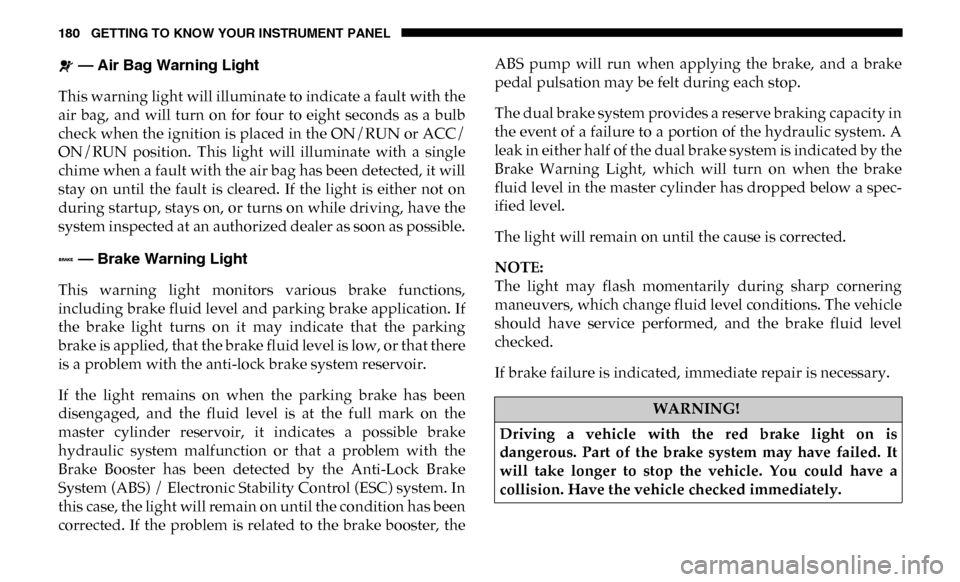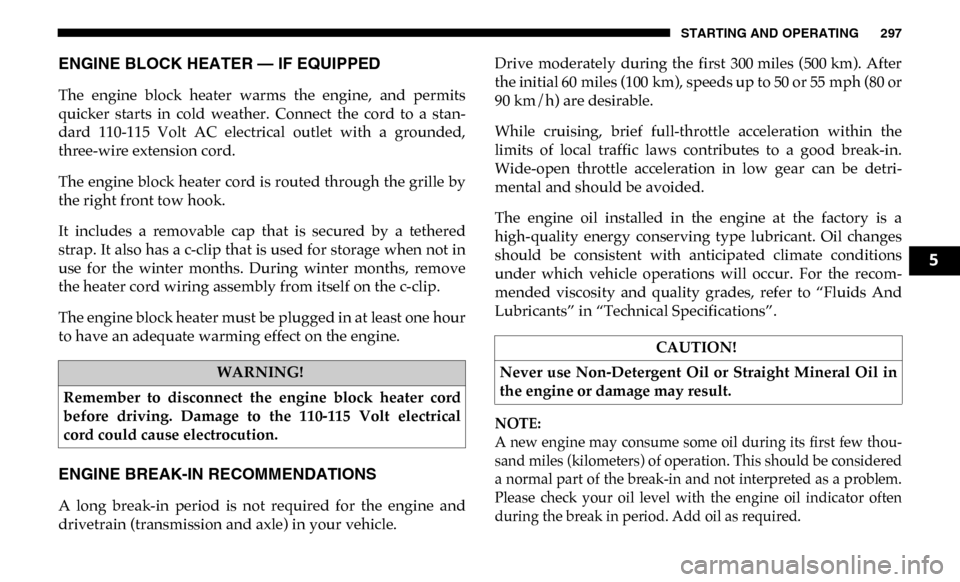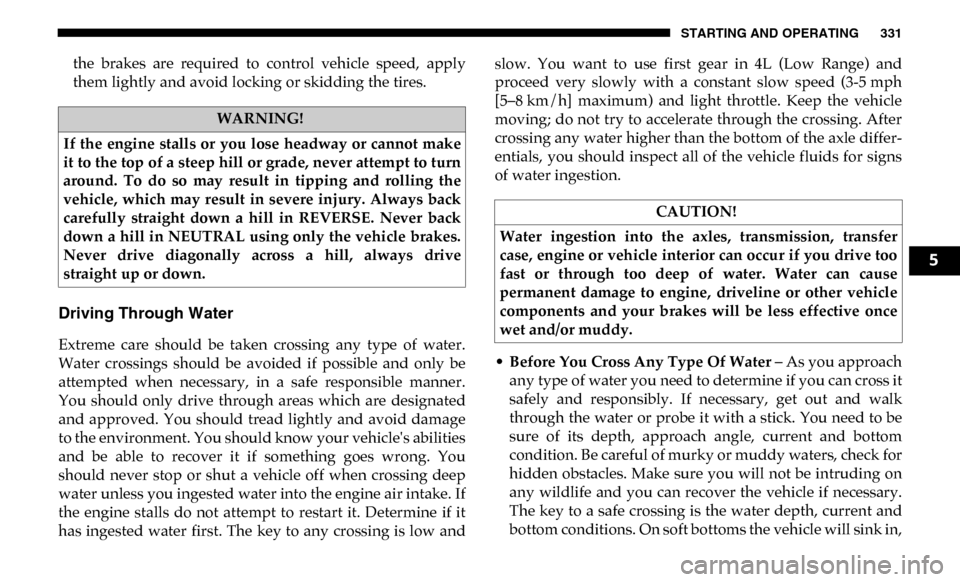Fluid check Ram 2500 2019 Owner's Manual
[x] Cancel search | Manufacturer: RAM, Model Year: 2019, Model line: 2500, Model: Ram 2500 2019Pages: 696, PDF Size: 13.89 MB
Page 11 of 696

9
IN CASE OF EMERGENCY
HAZARD WARNING FLASHERS ............................. 440
ASSIST AND SOS SYSTEM — IF EQUIPPED .............. 441
BULB REPLACEMENT ................................................... 446
Replacement Bulbs ..................................................... 446
Replacing Exterior Bulbs ............................................ 447
FUSES.................................................................................. 457
Power Distribution Center ......................................... 458
JACKING AND TIRE CHANGING .......................... 469
Jack Location ................................................................ 470
Removal Of Jack And Tools ....................................... 470
Removing The Spare Tire ........................................... 473
Preparations For Jacking ............................................ 476
Jacking Instructions ..................................................... 477
To Stow The Flat Or Spare ...................................... 483
Reinstalling The Jack And Tools ............................... 485
Hub Caps/Wheel Covers — If Equipped .............. 487
JUMP STARTING ............................................................ 488
Preparations For Jump Start ...................................... 489
Jump Starting Procedure ............................................ 490
MANUAL PARK RELEASE — 8–SPEED
TRANSMISSION ............................................................... 492
IF YOUR ENGINE OVERHEATS ..................................493
FREEING A STUCK VEHICLE ......................................494
TOWING A DISABLED VEHICLE ...............................495
Two-Wheel Drive Models .......................................... 497
Four-Wheel Drive Models .......................................... 497
Emergency Tow Hooks — If Equipped....................498
ENHANCED ACCIDENT RESPONSE
SYSTEM (EARS) ...............................................................498
EVENT DATA RECORDER (EDR)................................. 498
SERVICING AND MAINTENANCE
SCHEDULED SERVICING ............................................499
Maintenance Plan ........................................................500
Heavy Duty Use Of The Vehicle ...............................503
ENGINE COMPARTMENT .......................................... 504
6.4L Engine ..................................................................504
Checking Oil Level — Gas Engine ...........................505
Adding Washer Fluid ................................................505
Maintenance-Free Battery .......................................... 506
Page 182 of 696

180 GETTING TO KNOW YOUR INSTRUMENT PANEL
— Air Bag Warning Light
This warning light will illuminate to indicate a fault with the
air bag, and will turn on for four to eight seconds as a bulb
check when the ignition is placed in the ON/RUN or ACC/
ON/RUN position. This light will illuminate with a single
chime when a fault with the air bag has been detected, it will
stay on until the fault is cleared. If the light is either not on
during startup, stays on, or turns on while driving, have the
system inspected at an authorized dealer as soon as possible.
— Brake Warning Light
This warning light monitors various brake functions,
including brake fluid level and parking brake application. If
the brake light turns on it may indicate that the parking
brake is applied, that the brake fluid level is low, or that there
is a problem with the anti-lock brake system reservoir.
If the light remains on when the parking brake has been
disengaged, and the fluid level is at the full mark on the
master cylinder reservoir, it indicates a possible brake
hydraulic system malfunction or that a problem with the
Brake Booster has been detected by the Anti-Lock Brake
System (ABS) / Electronic Stability Control (ESC) system. In
this case, the light will remain on until the condition has been
corrected. If the problem is related to the brake booster, the ABS pump will run when applying the brake, and a brake
pedal pulsation may be felt during each stop.
The dual brake system provides a reserve braking capacity in
the event of a failure to a portion of the hydraulic system. A
leak in either half of the dual brake system is indicated by the
Brake Warning Light, which will turn on when the brake
fluid level in the master cylinder has dropped below a spec
-
ified level.
The light will remain on until the cause is corrected.
NOTE:
The light may flash momentarily during sharp cornering
maneuvers, which change fluid level conditions. The vehicle
should have service performed, and the brake fluid level
checked.
If brake failure is indicated, immediate repair is necessary.
WARNING!
Driving a vehicle with the red brake light on is
dangerous. Part of the brake system may have failed. It
will take longer to stop the vehicle. You could have a
collision. Have the vehicle checked immediately.
Page 291 of 696

SAFETY 289
Periodic Safety Checks You Should Make Outside
The Vehicle
Tires
Examine tires for excessive tread wear and uneven wear
patterns. Check for stones, nails, glass, or other objects
lodged in the tread or sidewall. Inspect the tread for cuts and
cracks. Inspect sidewalls for cuts, cracks, and bulges. Check
the wheel bolts for tightness. Check the tires (including
spare) for proper cold inflation pressure.
Lights
Have someone observe the operation of brake lights and
exterior lights while you work the controls. Check turn
signal and high beam indicator lights on the instrument
panel.
Door Latches
Check for proper closing, latching, and locking.
Fluid Leaks
Check area under the vehicle after overnight parking for
fuel, coolant, oil, or other fluid leaks. Also, if gasoline fumes
are detected or if fuel, or brake fluid leaks are suspected. The
cause should be located and corrected immediately.
• ALWAYS make sure objects cannot fall or slide into the
driver’s side floor area when the vehicle is moving.
Objects can become trapped under accelerator, brake,
or clutch pedals and could cause a loss of vehicle
control.
• NEVER place any objects under the floor mat (e.g., towels, keys, etc.). These objects could change the posi -
tion of the floor mat and may cause interference with
the accelerator, brake, or clutch pedals.
• If the vehicle carpet has been removed and re-installed, always properly attach carpet to the floor and check the
floor mat fasteners are secure to the vehicle carpet.
Fully depress each pedal to check for interference with
the accelerator, brake, or clutch pedals then re-install
the floor mats.
• It is recommended to only use mild soap and water to clean your floor mats. After cleaning, always check
your floor mat has been properly installed and is
secured to your vehicle using the floor mat fasteners by
lightly pulling mat.
WARNING! (Continued)
4
Page 299 of 696

STARTING AND OPERATING 297
ENGINE BLOCK HEATER — IF EQUIPPED
The engine block heater warms the engine, and permits
quicker starts in cold weather. Connect the cord to a stan-
dard 110-115 Volt AC electrical outlet with a grounded,
three-wire extension cord.
The engine block heater cord is routed through the grille by
the right front tow hook.
It includes a removable cap that is secured by a tethered
strap. It also has a c-clip that is used for storage when not in
use for the winter months. During winter months, remove
the heater cord wiring assembly from itself on the c-clip.
The engine block heater must be plugged in at least one hour
to have an adequate warming effect on the engine.
ENGINE BREAK-IN RECOMMENDATIONS
A long break-in period is not required for the engine and
drivetrain (transmission and axle) in your vehicle. Drive moderately during the first 300 miles (500 km). After
the initial 60 miles (100 km), speeds up to 50 or 55 mph (80 or
90 km/h) are desirable.
While cruising, brief full-throttle acceleration within the
limits of local traffic laws contributes to a good break-in.
Wide-open throttle acceleration in low gear can be detri
-
mental and should be avoided.
The engine oil installed in the engine at the factory is a
high-quality energy conserving type lubricant. Oil changes
should be consistent with anticipated climate conditions
under which vehicle operations will occur. For the recom -
mended viscosity and quality grades, refer to “Fluids And
Lubricants” in “Technical Specifications”.
NOTE:
A new engine may consume some oil during its first few thou -
sand miles (kilometers) of operation. This should be considered
a normal part of the break-in and not interpreted as a problem.
Please check your oil level with the engine oil indicator often
during the break in period. Add oil as required.
WARNING!
Remember to disconnect the engine block heater cord
before driving. Damage to the 110-115 Volt electrical
cord could cause electrocution.
CAUTION!
Never use Non-Detergent Oil or Straight Mineral Oil in
the engine or damage may result.
5
Page 333 of 696

STARTING AND OPERATING 331
the brakes are required to control vehicle speed, apply
them lightly and avoid locking or skidding the tires.
Driving Through Water
Extreme care should be taken crossing any type of water.
Water crossings should be avoided if possible and only be
attempted when necessary, in a safe responsible manner.
You should only drive through areas which are designated
and approved. You should tread lightly and avoid damage
to the environment. You should know your vehicle's abilities
and be able to recover it if something goes wrong. You
should never stop or shut a vehicle off when crossing deep
water unless you ingested water into the engine air intake. If
the engine stalls do not attempt to restart it. Determine if it
has ingested water first. The key to any crossing is low andslow. You want to use first gear in 4L (Low Range) and
proceed very slowly with a constant slow speed (3-5 mph
[5–8 km/h] maximum) and light throttle. Keep the vehicle
moving; do not try to accelerate through the crossing. After
crossing any water higher than the bottom of the axle differ
-
entials, you should inspect all of the vehicle fluids for signs
of water ingestion.
• Before You Cross Any Type Of Water – As you approach
any type of water you need to determine if you can cross it
safely and responsibly. If necessary, get out and walk
through the water or probe it with a stick. You need to be
sure of its depth, approach angle, current and bottom
condition. Be careful of murky or muddy waters, check for
hidden obstacles. Make sure you will not be intruding on
any wildlife and you can recover the vehicle if necessary.
The key to a safe crossing is the water depth, current and
bottom conditions. On soft bottoms the vehicle will sink in,
WARNING!
If the engine stalls or you lose headway or cannot make
it to the top of a steep hill or grade, never attempt to turn
around. To do so may result in tipping and rolling the
vehicle, which may result in severe injury. Always back
carefully straight down a hill in REVERSE. Never back
down a hill in NEUTRAL using only the vehicle brakes.
Never drive diagonally across a hill, always drive
straight up or down.
CAUTION!
Water ingestion into the axles, transmission, transfer
case, engine or vehicle interior can occur if you drive too
fast or through too deep of water. Water can cause
permanent damage to engine, driveline or other vehicle
components and your brakes will be less effective once
wet and/or muddy.
5
Page 429 of 696

STARTING AND OPERATING 427
Air Suspension System
To aid in attaching/detaching the trailer from the vehicle,
the air suspension system can be used. Refer to “Air Suspen-
sion System” in “Starting And Operating” for further infor -
mation.
NOTE:
The vehicle must remain in the engine running position
while attaching a trailer for proper leveling of the air suspen -
sion system.
SNOWPLOW
2500/3500 Models Only
Snowplow Prep Packages are available as a factory installed
option. These packages include components necessary to
equip your vehicle with a snowplow.
NOTE:
Before installation of a snowplow it is highly recommended
that the owner/installer obtain and follow the recommenda -
tions contained within the current Body Builders Guide. See
your authorized dealer, installer or snowplow manufacturer
for this information. There are unique electrical systems that
must be connected to properly assure operator safety and
prevent overloading vehicle systems. Before Plowing
• Check the hydraulic system for leaks and proper fluid
level.
• Check the mounting bolts and nuts for proper tightness.
• Check the runners and cutting edge for excessive wear. The cutting edge should be ¼ to ½ in (6 cm to 1.2 cm) above
ground in snow plowing position.
• Check that snowplow lighting is connected and func -
tioning properly.
WARNING!
Attaching a snowplow to this vehicle could adversely
affect performance of the airbag system in a collision. Do
not expect that the airbag will perform as described
earlier in this manual.
CAUTION!
The “Lamp Out” indicator could illuminate if exterior
lamps are not properly installed.
5
Page 502 of 696

500 SERVICING AND MAINTENANCE
Once A Month Or Before A Long Trip:
• Check engine oil level
• Check windshield washer fluid level
• Check tire pressure and look for unusual wear or damage.Rotate tires at the first sign of irregular wear, even if it
occurs before the oil indicator system turns on. • Check the fluid levels of the coolant reservoir, brake
master cylinder, power steering and automatic transmis -
sion (six-speed only) and fill as needed
• Check function of all interior and exterior lights
Maintenance Plan
Required Maintenance
Refer to the Maintenance Plan on the following pages for required maintenance.
At Every Oil Change Interval As Indicated By Oil Change Indicator System:
• Change oil and filter.
• Rotate the tires. Rotate at the first sign of irregular wear, even if it occurs before the oil indicator system turns on.
• Inspect battery and clean and tighten terminals as required.
• Inspect brake pads, shoes, rotors, drums, hoses and park brake.
• Inspect engine cooling system protection and hoses.
• Inspect exhaust system.
• Inspect engine air cleaner if using in dusty or off-road conditions. If required, replace air cleaner filter.
Page 503 of 696

SERVICING AND MAINTENANCE 501
Mileage or time passed
(whichever comes first)
20,000
30,000
40,00050,000
60,000
70,000
80,00090,000
100,000
110,000120,000130,000140,000150,000
Or Years: 2 3 4 5 6 7 8 9 10 11 12 13 14 15
Or Kilometers:
32,000 48,000
64,00080,000
96,000
112,000
128,000144,000160,000
176,000192,000208,000224,000240,000
Additional Inspections
Inspect the CV/Universal joints. X X X XX XX
Inspect front suspension, tie rod
ends, and replace if necessary. X X X
XX XX
Inspect the front and rear axle
surfaces. If gear oil leakage is
suspected, check the fluid
level. If using your vehicle for
police, taxi, fleet, off-road or
frequent trailer towing, change
axle fluid.
X X X
XX XX
Inspect the brake linings,
replace as necessary. X X X
XX XX
Adjust parking brake as
necessary. X X X
XX XX
Inspect transfer case fluid. XX X
7
Page 507 of 696

SERVICING AND MAINTENANCE 505
Checking Oil Level — Gas Engine
To assure proper lubrication of your vehicle's engine, the
engine oil must be maintained at the correct level. Check the
oil level at regular intervals, such as every fuel stop. The best
time to check the engine oil level is about five minutes after
a fully warmed up engine is shut off.
Checking the oil while the vehicle is on level ground will
improve the accuracy of the oil level readings. Always main-
tain the oil level within the SAFE zone on the dipstick.
Adding one quart of oil when the reading is at the bottom of
the SAFE zone will result in a reading at the top of the safe
zone on these engines.
Adding Washer Fluid
The fluid reservoir is located under the hood and should be
checked for fluid level at regular intervals. Fill the reservoir
with windshield washer solvent only (not radiator anti -
freeze). When refilling the washer fluid reservoir, take some washer fluid and apply it to a cloth or towel and wipe the
wiper blades clean. This will help blade performance.
To prevent freeze-up of your windshield washer system in
cold weather, select a solution or mixture that meets or
exceeds the temperature range of your climate. This rating
information can be found on most washer fluid containers.
After the engine has warmed up, operate the defroster for a
few minutes to reduce the possibility of smearing or freezing
the fluid on the cold windshield. Windshield washer solu-
tion used with water as directed on the container, aids
cleaning action, reduces the freezing point to avoid line clog
-
ging, and is not harmful to paint or trim.
CAUTION!
Overfilling or underfilling will cause oil aeration or loss
of oil pressure. This could damage your engine.
WARNING!
Commercially available windshield washer solvents are
flammable. They could ignite and burn you. Care must
be exercised when filling or working around the washer
solution.
7
Page 529 of 696

SERVICING AND MAINTENANCE 527
(Continued)
Brake System
In order to assure brake system performance, all brake
system components should be inspected periodically. Refer
to the “Maintenance Plan” in this section for the proper
maintenance intervals.
Fluid Level Check — Brake Master Cylinder
The fluid level of the master cylinder should be checked
when performing under the hood service or immediately if
the brake system warning lamp indicates system failure.
If necessary, add fluid to bring level within the designated
marks on the side of the reservoir of the brake master
cylinder. Be sure to clean the top of the master cylinder area
before removing cap.With disc brakes the fluid level can be expected to fall as the
brake linings wear. However, an unexpected drop in fluid
level may be caused by a leak and a system check should be
conducted.
Refer to “Fluids And Lubricants” in “Technical Specifica
-
tions” for further information.
WARNING!
Riding the brakes can lead to brake failure and possibly
a collision. Driving with your foot resting or riding on
the brake pedal can result in abnormally high brake
temperatures, excessive lining wear, and possible brake
damage. You would not have your full braking capacity
in an emergency.
WARNING!
• Use only manufacturer's recommended brake fluid. Refer to “Fluids And Lubricants” in “Technical Speci -
fications” for further information. Using the wrong
type of brake fluid can severely damage your brake
system and/or impair its performance. The proper type
of brake fluid for your vehicle is also identified on the
original factory installed hydraulic master cylinder
reservoir.
• To avoid contamination from foreign matter or mois -
ture, use only new brake fluid or fluid that has been in
a tightly closed container. Keep the master cylinder
reservoir cap secured at all times. Brake fluid in a open
container absorbs moisture from the air resulting in a
lower boiling point. This may cause it to boil unexpect -
edly during hard or prolonged braking, resulting in
sudden brake failure. This could result in a collision.
7